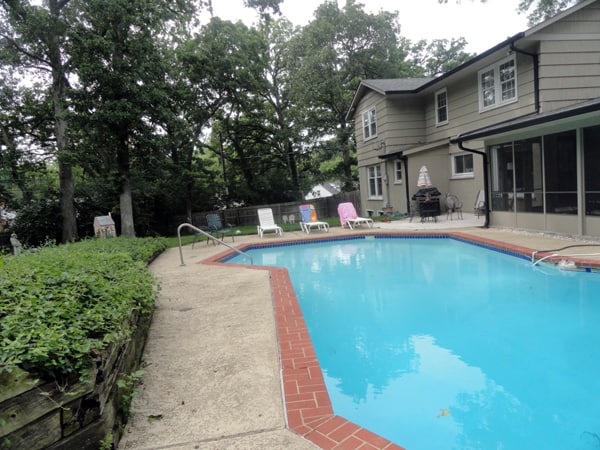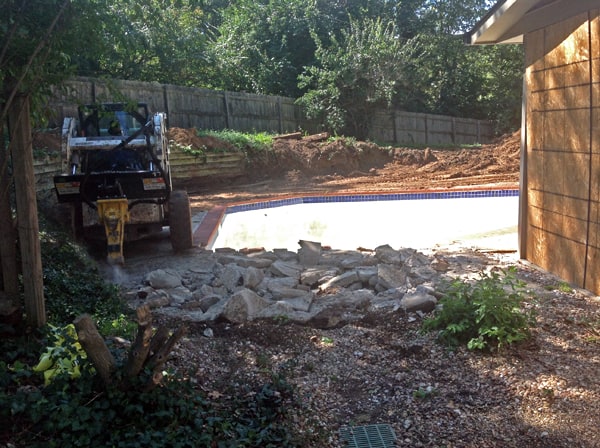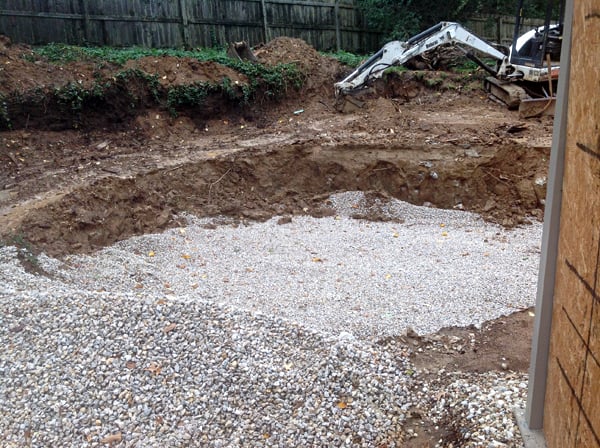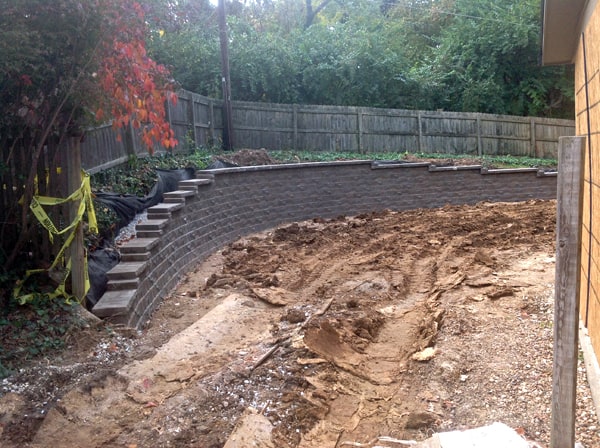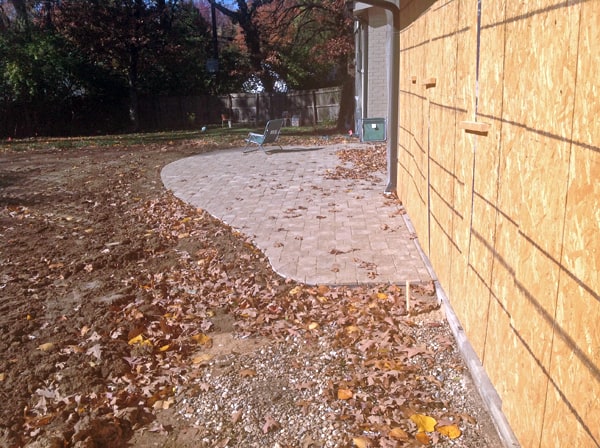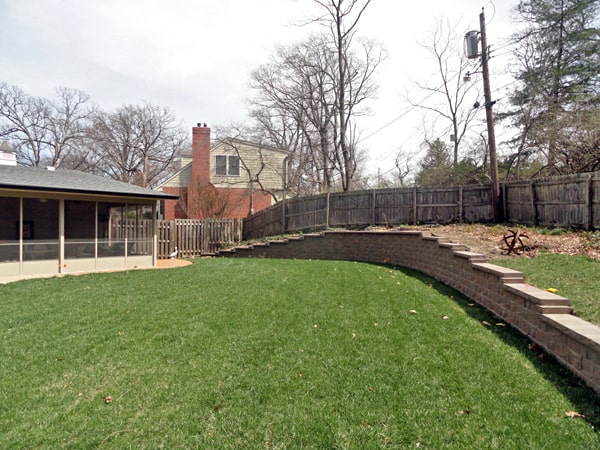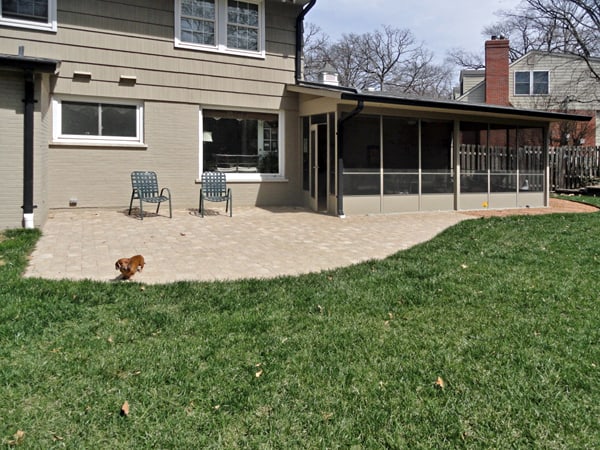A Glendale, Missouri home had an inground gunnite pool installed in 1964 (shown above). When Mosby Building Arts’ clients’ bought the house over 20 years ago, the family was thrilled to have a pool. It brought countless hours of fun – and maintenance.
With the children grown and moved, the pool was used less often and became a huge maintenance issue that was facing upwards of $30,000 in repairs. Longing for a lower-maintenance backyard, it was time to remove the pool, replace the railroad tie retaining wall, and install a new paver patio.
There is a quick way to fill in a pool. There are plenty of Youtube videos showing a one-day job from demolition to newly level yard. What those videos don’t show is months or years later when the ground begins to settle, or sink holes appear, or improper water drainage creates a swamp.
There is a proper way to remove and fill an inground pool to avoid future headache, damage and expense. The following photos show the steps.
The Mosby construction crew began, with a bobcat, breaking up the surrounding concrete deck (above), and poking holes in the walls and floor of the gunnite pool. This is so collected water from the surface (like rain or hose water) and underground moisture can flow freely and drain properly.
If concrete, gunnite or other inground pool surfaces are not busted up properly there is the very real possibility of trapped moisture eventually pushing the entire pool up to the surface. To avoid this expensive damage, never fill up a pool without breaking up the surfaces.
The gunnite and concrete debris is pushed into the pool to help fill the hole (above). This reduces the amount of gravel and soil filler needed, and reduces the expense of hauling off debris. It’s smart to recycle these materials.
After crushing and tamping down the debris, gravel is added to the pool cavity, as shown above. The clean gravel is added in 1 foot level layers, firmly compacting each layer before adding another. This gravel base locks the pool debris together and provides a firm, solid foundation for the soil. Soil decompresses and shrinks over time, but gravel does not. Also, gravel is typically cheaper than soil, so it’s easier on the budget to fill up on gravel.
At this point, Mosby also added perforated 6 inch PVC yard drainage piping, running the length of the pool and out to daylight in the backyard. This is an extra and optional insurance policy to avoid any trapped underground water from creating a swamp.
Next, the compacted and level gravel is covered with a filter cloth. This keeps the soil from settling into the gravel, which ensures there will not eventually be a visible indentation in the surface.
Then the top soil is added. Soil needs to be a minimum of 3 feet deep for gardening purposes, or deeper if planting trees is part of the landscape plan.
With the pool cavity topped off with compacted and leveled soil, the Mosby crew built a new retaining wall of concrete pavers (shown above) with drainage piping behind the wall.
Next up is a new stone paver patio, shown above. And with the dusty work out of the way, Mosby removed the plywood panels that served as dust protection for the screen porch, and installed sod over the new topsoil, blending it with the existing lawn.
The work scope for this project also included properly disconnecting and terminating the electrical and plumbing lines the lines that powered the pool.
With the project complete, the inground pool is just a memory.
Because of the extra care and precautions taken to properly fill the pool, this lawn will remain firm and healthy with proper drainage. There will be no worries of sink holes, swamps or a pool-shaped valley forming in the backyard, all of which are very real possibilities when shortcuts are taken to fill an inground pool.
Also of importance is obtaining a demolition permit for removing a pool, with the added benefit being that the pool is removed from property taxes, thus lowering the amount paid.
If you need help in Metro St. Louis with removing a pool and creating a new landscape plan for your home, call the Mosby office at 314.909.1800 or contact them here.




